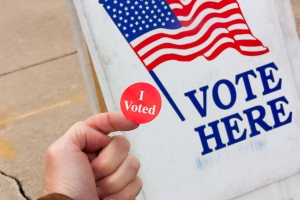
I’ve looked at some of the negative effects of corporate taxes in previous posts. These largely had to do with wages and employment. But a new study based on Chinese data finds that they can have negative effects on innovation:
Theoretically, taxes can have either positive or negative impacts on firm innovation. On the one hand, lower taxes can increase the after-tax profit of firms, so that they have better capacity to invest in new technologies or products. Moreover, lower taxes may reduce the resources that firms spend on tax evasion, such as the costs of bribing tax officers, which can be instead used on innovation activities. On the other hand, lower taxes may also have a negative impact on innovation because they decrease government revenue, and in turn may reduce government spending on public goods such as research, education, and infrastructure. As a result, whether providing tax incentives can improve firm innovation is ambiguous.
In a new study, we investigate the impact of taxes on firm innovation using a natural experiment in China (Cai et al. 2018). In November 2001, China implemented a tax collection reform on all manufacturing firms established on or after January 2002, which switched the collection of corporate income taxes from the local tax bureau to the state tax bureau. After the reform, similar firms established before or after 2002 could pay very different effective tax rates because of the differences in the management and incentives of those two types of tax bureaus…[T]he reform changed the enforcement of tax collection, resulting in a reduction of effective corporate income tax rates by almost 10% among newly established firms.
…To test the impact of taxes on innovation, we combine a comprehensive dataset of all medium and large enterprises in China between 1998 and 2007 with patent data from the State Intellectual Property Office (SIPO), including all patents applied in China by the year 2014. We use the data to measure three dimensions of innovation activities – input (R&D expenditure and skilled labour ratio), output (number of patent application), and quality (type and characteristics of patent application).
Our analysis yields several interesting results. First, we show a strong and robust causal relationship between tax rate and firm innovation. Decreasing the effective tax rate by one standard deviation (0.01) increases the average number of patent application by a significant 5.7% (see Figure 2 for the graphical evidence). The reform also stimulated R&D expenditures and increased the skilled-labour ratio by 14%. Second, a lower tax rate also improves the quality of patents. The impact of tax reform on patent applications mainly comes from its effect on invention and utility patents – decreasing the effective tax rate by one standard deviation improves the probability of having an invention patent application by 4.4% and increases the number of utility patent applications by 4.7%. This suggests that the improvement in innovation outcomes is not merely driven by the low-quality design patents. We also use the detailed information on patent applications as proxies for the patent quality, including number of claims, number of independent claims, and the amount of effort that was spent on the patent application (length of the application document, number of figures, and length of abstract). In our patent data, only invention and utility patents have the above information, and results suggest that a reduction in the tax rate significantly improved patent quality, and the effect is significant for both invention and utility patents.
Another study drawing on datasets from the 20th century had similar results:
We use new data from the 20th century to show a negative effect of high taxes on innovation. We use three newly constructed datasets consisting of: (1) the universe of corporate and non-corporate inventors who patented since 1920, as well as the citations to their patents; (2) the patents, research employment, and location of laboratory facilities of firms active in R&D; and (3) an historical state-level database of corporate income taxes linked to personal income tax rates from Bakija (2017).
…At the macro level, we find that the effects of taxes are strongly negative and quantitatively important. For example, a one percentage point increase in either the median or top marginal tax rate is associated with an approximately 4% decline in patents, citations, and inventors, and a close to 5% decline in the number of superstar inventors in the state. A one percentage point higher top corporate tax rate leads to around 6-6.3% fewer patents, 5.5-6% fewer citations, 4.6-5% fewer inventors, and 8.5-9.3% fewer superstar inventors.
Furthermore, we find that the share of patentsassigned to corporations appears to be extremely sensitive to the corporate tax rate. A one percentage point increase in the top corporate tax rate is associated with close to 1.2 percentage points fewer patents assigned to companies.
Individual case studies of tax regime changes underscore how important the effect of taxation could be. As one example, Figure 4 shows the depressing impact on innovation of Michigan’s 1967 and 1968 tax reform bills. In 1967, Michigan introduced its personal income tax, at a rate of 2.6%. In 1968, it then introduced its corporate income tax, at a rate of 5.6%. In the subsequent years, the state experienced a substantial decline in innovative output relative to its peer states.
…At the micro level, we similarly find that taxation negatively affects innovation. To estimate the effect, we assign inventors to their tax brackets based on their productivity, which we observe in the patent data. A one percentage point higher tax rate at the individual level decreases the likelihood of having a patent in the next three years by 0.63 percentage points, even controlling for inventor quality and all other state-level policy changes. The likelihood of having high-qualitypatents with more than ten citations decreases by 0.6 percentage points for every percentage point increase in the personal tax rate. We also show that corporate inventors — inventors who appear on at least one patent assigned to a company — are much more responsive to personal and corporate income taxes than non-corporate inventors, consistent with the profit-sharing narrative posited above, as well as with different motives for innovation.
Inventors prefer to locate in places where other inventors are active in their particular technology area. This suggests there are particular characteristics which may matter to inventors, and which can ultimately dampen their responses to taxation. Silicon Valley, for example, still attracts an abundance of tech inventors due to its rich network of capital and labour resources for innovation, despite California being a high tax state.
At the firm level, we find consistently negative effects of taxation on patents and citations. We also find that the top corporate tax rate has a significantly negative effect on the decision of a firm to locate its R&D laboratory in a given state.
Innovation is critical to improvements in human well-being. Something for policymakers to consider.














